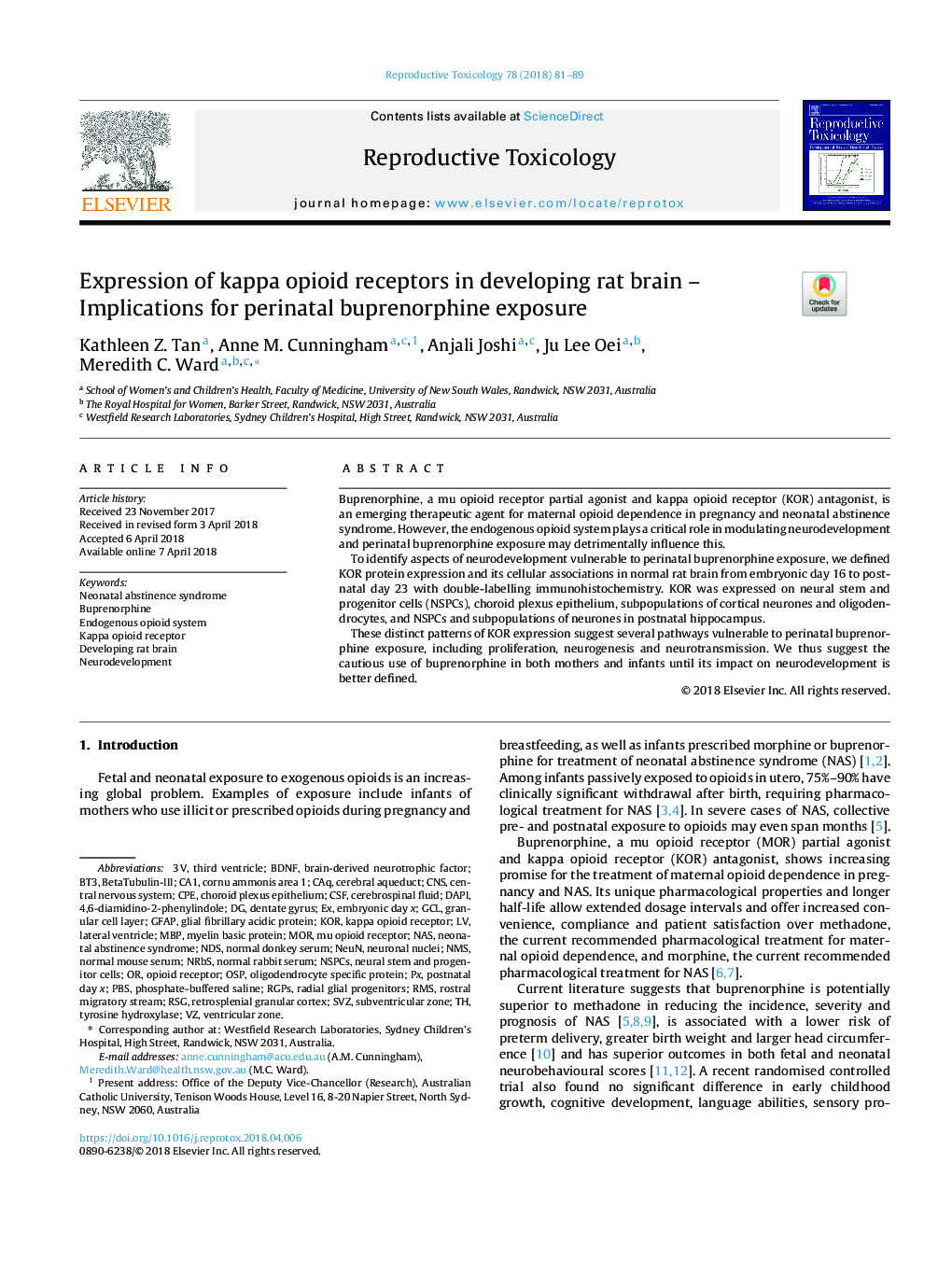| Article ID | Journal | Published Year | Pages | File Type |
|---|---|---|---|---|
| 8552289 | Reproductive Toxicology | 2018 | 9 Pages |
Abstract
These distinct patterns of KOR expression suggest several pathways vulnerable to perinatal buprenorphine exposure, including proliferation, neurogenesis and neurotransmission. We thus suggest the cautious use of buprenorphine in both mothers and infants until its impact on neurodevelopment is better defined.
Keywords
CPENRBSCAQRSGNSPCsSVZOSPGCLNDSNeuNDAPINASRMSPBSMORNMSGFAPCA1MBP4,6-diamidino-2-phenylindoleBDNFcornu ammonis area 1Choroid plexus epitheliumlateral ventriclethird ventriclebuprenorphineneurodevelopmentDeveloping rat braintyrosine hydroxylaserostral migratory streamCNSnormal rabbit serumnormal donkey serumnormal mouse serumNeural stem and progenitor cellsNeonatal abstinence syndromecentral nervous systemEndogenous opioid systemdentate gyrusBrain-derived neurotrophic factorretrosplenial granular cortexcerebral aqueductgranular cell layerCerebrospinal fluidCSFPhosphate-buffered salineventricular zonesubventricular zoneneuronal nucleiKORGlial fibrillary acidic proteinMyelin basic proteinkappa opioid receptorMu opioid receptorOpioid receptor
Related Topics
Life Sciences
Environmental Science
Health, Toxicology and Mutagenesis
Authors
Kathleen Z. Tan, Anne M. Cunningham, Anjali Joshi, Ju Lee Oei, Meredith C. Ward,
